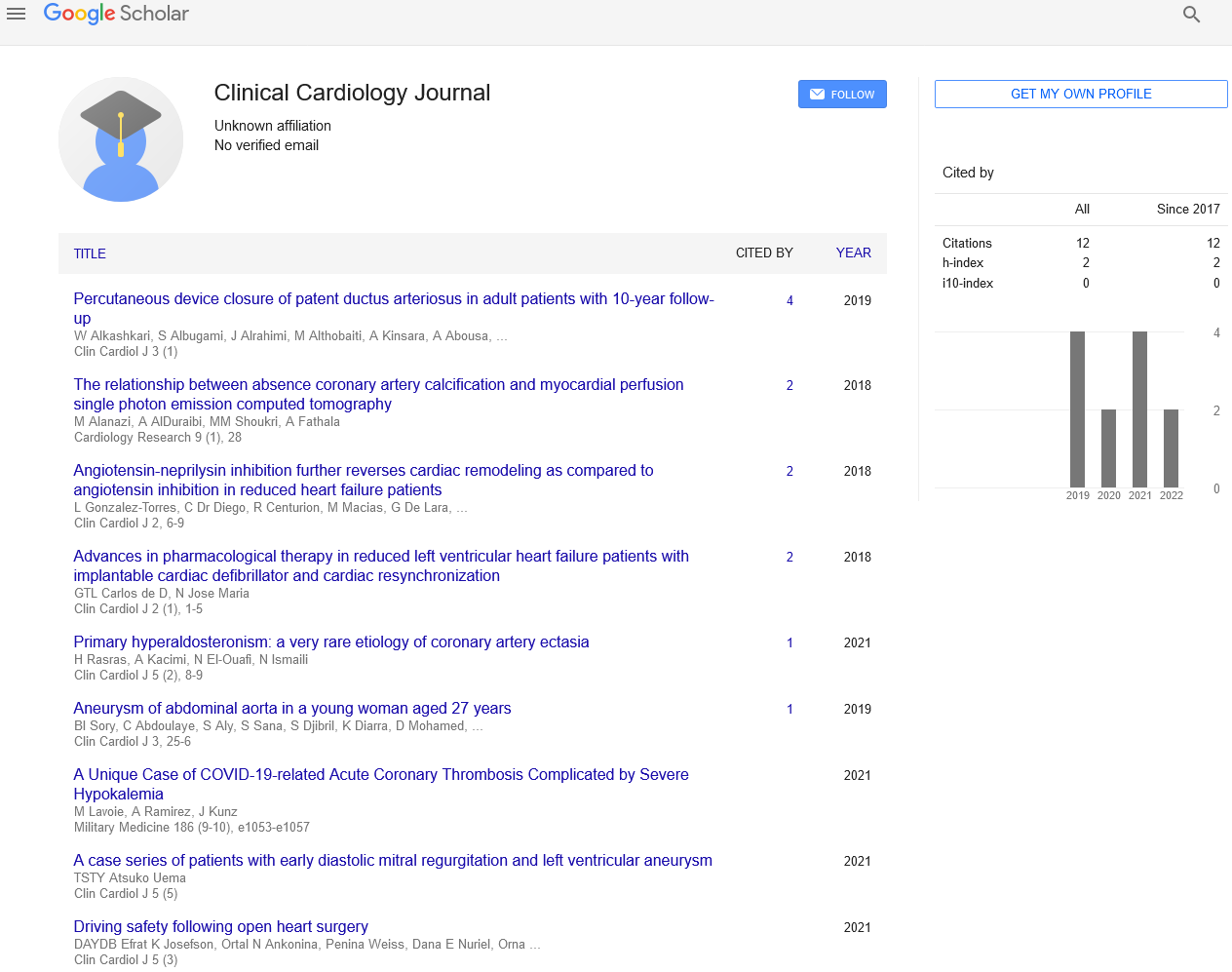Cardiovascular toxicity of nicotine and microcystins
Received: 05-Jul-2021 Accepted Date: Jul 10, 2021; Published: 15-Jul-2021
Citation: Sandeep C. Cardiovascular toxicity of nicotine and microcystins. Clin Cardiol J 2021;5(4):2.
This open-access article is distributed under the terms of the Creative Commons Attribution Non-Commercial License (CC BY-NC) (http://creativecommons.org/licenses/by-nc/4.0/), which permits reuse, distribution and reproduction of the article, provided that the original work is properly cited and the reuse is restricted to noncommercial purposes. For commercial reuse, contact reprints@pulsus.com
Editorial
In the present discussion over the advantages vs. hazards of electronic cigarettes and related public health policy, the cardiovascular safety of nicotine is a key issue. Nicotine has pharmacologic actions that may contribute to cigarette smokers’ acute cardiovascular events and increased atherogenesis. Studies on nicotine treatments and smokeless tobacco show that the dangers of nicotine without tobacco combustion products (cigarette smoke) are lower than cigarette smoking, although they are still a concern in persons with cardiovascular disease.
Electronic cigarettes supply nicotine without burning tobacco and appear to represent a modest cardiovascular risk in healthy users, at least when used for a short period of time. The death rate from cardiovascular diseases (CVD) is increasing in China. In China, the rising prevalence of CVD has become a major public health concern. Blooms of cyanobacteria have lately been identified as a global environmental concern. Microcystins (MCs) are the most toxic cyanotoxin found in water bodies and are secondary products of cyanobacteria metabolism. Recent research has found substantial evidence of a link between MC exposure and cardiotoxicity, which poses a risk to human cardiovascular health. The effects of MCs on the cardiovascular system are the topic of this review, which includes some evidence that CVD could be prevented.
We reviewed the present state of information about the cardiovascular toxicity of MCs in terms of direct and indirect cardiovascular damage. The growing levels of reactive oxygen species (ROS), oxidative stress in mitochondria and the endoplasmic reticulum, and the inhibitory activities of serine/threonine protein phosphatase 1 (PP1) and 2A are all factors that influence MC toxicity (PP2A). This report also proposes several research directions to defend human health from the threat of MCs.





